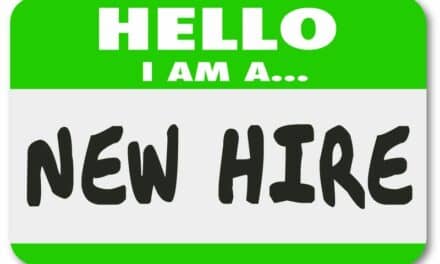
By understanding your customer’s needs, you can tailor the service experience, such as a staggered schedule for better service support.
Some may feel that the clinical/biomedical engineering department is responsible for repairing the hospital’s equipment, and everyone just knows it. Some may feel that the biomed department can be flexible to work around other departments, and that is the norm. Have you ever considered that departments call upon you and never realize the scope of the services you offer, nor do they understand what benefits they have realized by having you and your department serve them?
MARKETING AND SERVICE
From an academic perspective, marketing starts with finding out what the prospective customers think and what they need. The products and services then fulfill these needs. The pricing, promotion, and distribution of these products and services determine who will be willing and able to buy. In other words, marketing is the wide range of activities to ensure you continue to meet the needs of customers and get value in return. Marketing usually focuses on one product or service. In the practical sense, think of marketing as making the customer aware of what you have to offer or reminding them of the services they have been using.
Service can be defined as providing a transactional support event that has a distinct beginning and ending. While that may sound good in theory, I think service is far more than that. Does the transaction event really end when the service report is closed? I would suggest that the event may close on paper, but it remains open in the customer’s mind for days, weeks, or even years. Think of a time when you received great service and how long that memory stayed with you. Also, how much did that make you want to use the same person or company for service the next time? How forgiving would you be if there was a mistake, based on the past exceptional service you experienced? A positive service event can help predict the future satisfaction of the customer base.
You may wonder why this is important. By proper internal marketing, you can regularly remind the customer of the services you offer and the value the department brings to the hospital. Do everything you can to make those positive service experiences stick and enlighten your customers on what else you can do for them.
A DIFFERENT WAY TO VIEW WHAT YOU DO
Two important topics for clinical/biomedical departments to consider include:
- Start viewing all activities as a service performed; and
- Identify the target audience and understand what appeals to them.
Have you ever been asked to fix someone’s eyeglasses or something that seems small but makes a big difference in someone’s day? All the duties you perform as part of your job, such as repairs and upgrades, are services, but the things you do that seem outside the scope of your job are services also. Whether it is fixing eyeglasses or expediting paperwork to ensure a contract is put in place to avoid time and materials billing, these are all services—services you perform that have a value. You are doing the work, and you also deserve the credit.
CUSTOMIZING SERVICES
When we purchase a product off the shelf, it is somewhat standard and there is very little room for product customization. If you purchase a television, you would purchase the model that has the features you are looking for and would not expect something to be “added” later. Service is a sharp contrast in the consumer mind-set. Service is created as it is consumed. In other words, a service transaction is performed, and once it is performed, it is gone. The only existence of the performance is the working piece of equipment (or a still broken piece of equipment).
When thinking of service and how customizable service is, consider public transportation. It is not customizable to your needs, and there are no personal judgments that can be made by the person delivering the service, such as a bus driver. The route is set, and the bus driver follows it. In the biomed industry, service is very customizable. There are service contract options or time and materials options. Almost every repair involves a personal judgment on troubleshooting, repairs, testing, and possible work-arounds.
A service experience does not have a “one size that fits all customers” model, and in the biomed industry you must be trained to listen to the customer’s needs. Through an understanding of the customer’s needs you can start to customize the service experience. The service sold to the customer must help the customer. That sounds simple, but to help the customer, you must understand his or her unique process. If the operating room (OR) that you support starts cases at 6:30 am, you may want to have a staggered schedule where one of the BMETs starts at 6 am. Your department may already do this to meet the customer’s needs, but this represents a prime example of customizing service for the customer. By identifying each department’s unique needs and looking at ways to support them, you are delivering the customized service that is vital to the facility, staff, and, ultimately,the patient.
The OR has a very different need than the physical therapy department, for instance. The services you can offer to the radiology department may be seen as a different value than the services you can offer to the general patient care areas in the eyes of the chief financial officer (CFO). Customizing the services, as well as the information delivered, must be based on the audience. The CFO may want to know that you save $5K by completing the repair in-house, the risk manager may want to know the PM completion rate, and the performance improvement team may want to know how after-hours response time has decreased. With all of the departments and groups impacted by the biomed department’s activities, a varied approach to reporting must be taken, which falls in line with item two above: Identify the target audience, and understand what appeals to them.
MARKETING WHAT YOU DO
Clinical/biomedical managers normally deliver standardized reports to the hospital committee members during management meetings. These reports would most likely contain information on financial performance, reportable events, FDA recalls, contract negotiations, and/or PM status. That is great information, and it showcases the biomed team’s effort and hard work. Since the managers in the meeting may be less than 5% of all hospital employees, you must find a way to reach the other 95% of hospital employees.
The biomed department could create a small flyer that has its department phone number, hours of operation, assigned biomed (if there are assignments), and emergency after-hours number. This is where you could really highlight the customized services offered. Different flyers can be created that list the unique services offered to departments. There may only be a few nonstandard flyers, but they can have a great impact.
As an alternative, create one flyer that has customized services listed at the bottom, such as “OR support hours 6 am to 5 pm,” while the normal support hours may be 8 am to 5 pm. This approach can show the facility how you can accommodate and customize the service delivered. These flyers can be distributed and posted around the hospital and are great for any remote clinics the department may serve.

Reports delivered during management meetings, flyers, and monthly updates can help showcase the biomed team’s effort and hard work.
This can also open the door for a barrage of nonstandard requests, so whatever choice you make, do so with caution and understand the possible unintended outcomes, such as nonstandard requests from multiple departments.
Another great way to reach a large population of the hospital is to create a monthly update report that gets distributed to managers and supervisors. A bit more comprehensive than the single-page flyer, the monthly update report could include a list of BMETs/CEs that work in the facility and the departments they are responsible for, if there are specific assignments. In addition to listing the departments they cover, a list of service schools they have completed might be beneficial. It will add to the technical expertise and credibility of the team.
AN OUTLINE TO SHINE
Outline the accomplishments of the department, which could simply consist of a bullet list of high-impact projects. It should not include day-to-day tasks such as repairing a monitor. The activities to showcase might be the repair of an MRI, which eliminated the need for outside service to be contacted. This example should illustrate the dollars saved by doing the in-house repair as well as the revenue realized because procedures did not have to be cancelled.
Include the PM completion rate. This is a great number to announce as it can demonstrate the team’s ability to execute scheduled tasks. This could also be a perfect place to announce the scheduled PMs for the current month and the next month, which will serve as a notification that those departments will see more of you and you will need access to their equipment.
Lastly, you can list any suggestions to reduce repairs. These types of tips can demonstrate the biomed team’s desire to be proactive to reduce the repairs, cost, and downtime. You can also illustrate any value-added services. You can list those activities such as assisting in contract negotiations or participation in hospital committees to drive efficiency or patient safety.
For whatever services you provide, there is a customer that receives them. You must realize that everything you do is a service and a value to someone, and that each recipient of service has a different need. When you uncover that need and customize your service to fill it, you will be indispensable.
Randell Orner, PhD, is a 20-year veteran of the biomedical field. For more information, contact .




